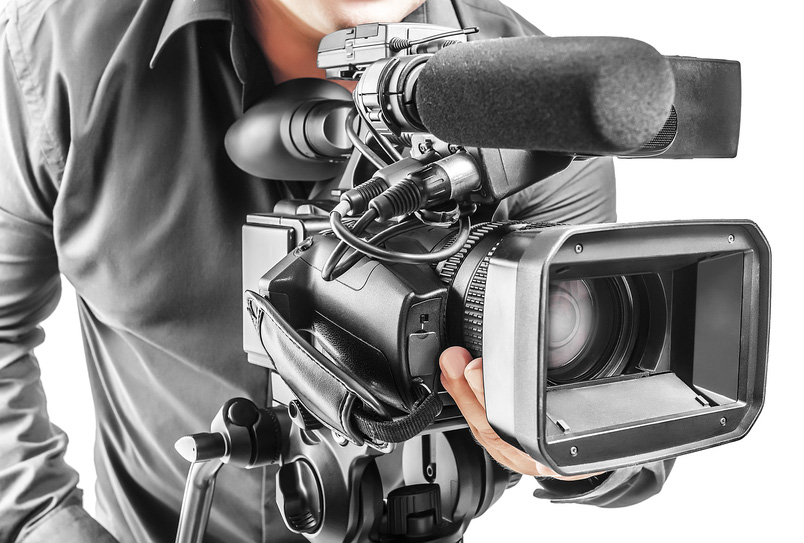Comprehending the Effect of Legal Videography on Case Outcomes
Comprehending the Effect of Legal Videography on Case Outcomes
Blog Article
Exploring the Vitality of Lawful Videography: a Comprehensive Insight Into Its Performance in Preserving Accurate Visual Records for Legal Situations
Legal videography stands as a vital component in the realm of legal proceedings, serving as a silent yet effective onlooker in the pursuit of justice. The utilization of video technology in documenting legal instances goes beyond simple record-keeping; it encapsulates the really significance of events, feelings, and statements that unravel within courtrooms. By meticulously recording visual proof, legal videography not just protects the accuracy of these minutes but likewise gives a much deeper understanding of the complexities included. As we explore the capability and relevance of legal videography in the context of legal instances, a profound awareness dawns upon the important duty it plays in shaping the training course of justice.
Value of Lawful Videography
Highlighting the crucial duty of legal videography in contemporary lawful procedures, its significance depends on its ability to provide irrefutable visual evidence that enhances the discussion of testimonies and truths. By recording live events, depositions, and witness statements in a video format, lawful videography makes certain that every nuance, detail, and expression is properly protected for later evaluation. This visual documents functions as an effective tool in court rooms, allowing judges and jurors to much better recognize the context of a situation and make notified decisions based on the provided proof.
In addition, lawful videography adds to increased transparency and liability in the lawful system. In essence, the relevance of lawful videography exists in its ability to support the stability of the legal process by catching and protecting exact aesthetic records that support the pursuit of justice.
Performance in Lawful Documentation
Lawful videography's duty in contemporary legal procedures expands past supplying aesthetic proof; its performance in lawful documentation is important for accurately preserving the details of occasions and testimonies. With the thorough recording of depositions, court process, witness testaments, and criminal activity scene investigations, lawful videography ensures an unfiltered account of events that can be taken another look at and examined during the legal process. This precise paperwork serves as a crucial resource for attorneys, juries, and judges to reference particular moments, body language, facial expressions, and subtleties that might not be completely caught in created records alone.
Furthermore, lawful videography plays a pivotal role in maintaining the integrity of lawful process by minimizing the threat of false impression or manipulation of information. The aesthetic documents captured with lawful videography supply an honest representation of the facts provided during a situation, providing a trusted and extensive resource of evidence that can significantly impact the end result of lawful disagreements (Legal Videography). Basically, the functionality of lawful videography in legal paperwork functions as a keystone in supporting transparency, precision, and fairness within the lawful system
Significance in Visual Evidence Preservation
Protecting visual proof via precise recording strategies is a vital aspect of lawful videography. By properly documenting these visuals, lawful videographers play a crucial role in ensuring the integrity and credibility of proof offered in court.
Aesthetic proof preservation also helps in stopping misconceptions or misinterpretations that can emerge from written or verbal testaments. The ability to see and listen to events as they occurred can considerably affect the end result of an instance. Aesthetic proof can offer as a powerful device for both the prosecution and defense in presenting their arguments persuasively.
Role in Ensuring Justice
In the quest of fair and just lawful end results, the role of legal videography is essential. Legal videography plays a critical duty in making certain justice by offering objective and precise aesthetic proof that can dramatically affect the outcome of lawful instances. Unlike composed files or testaments, video clip recordings record the subtleties of body movement, faces, and intonation, providing an extensive representation of events as they unfold. This visual evidence is particularly useful in courts, where it can assist affirm or test witness statements, enhance disagreements, and ultimately contribute to the facility of fact and justness.
Additionally, legal videography serves as a method of protecting critical moments and details that may be missed or misunderstood in written transcripts (Legal Videography). By documenting scenes, actions, and interactions in real-time, legal videography assists protect against misstatements and makes certain that all events included have access to the very same info, advertising transparency look what i found and liability in the legal procedure. Ultimately, making use of legal videography not just improves the performance of legal process but additionally supports the concepts of justice and equity in the legal system
Crucial Tool for Legal Situations

Verdict
Finally, legal videography plays a crucial duty in protecting accurate aesthetic records for legal situations. Its importance hinges on its capability in legal documents, significance in aesthetic proof preservation, and role in guaranteeing justice. As a vital device for lawful situations, lawful videography serves as an important source for providing visual proof and contributing to the general integrity of the lawful process.
Lawful videography's useful site role in modern-day legal process extends beyond providing aesthetic evidence; its performance in legal paperwork is important for properly preserving the information of events and statements. In significance, the functionality of lawful videography in lawful documentation offers as a cornerstone in maintaining openness, accuracy, and justness within the lawful system.
Ultimately, the usage of lawful videography not only improves the performance of legal procedures yet also supports the concepts of justice and equity in the legal system.

As a vital tool for lawful situations, lawful videography serves as a beneficial resource for offering visual proof and contributing to the general integrity of the lawful procedure.
Report this page